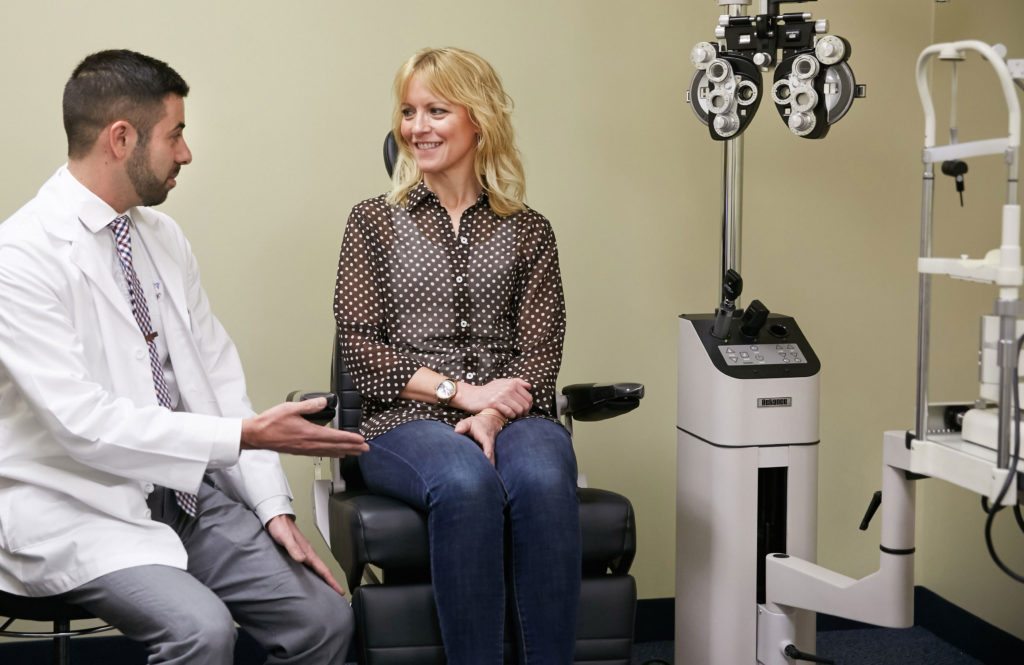
Having a regular eye exam helps prevent countless diseases and provide early detection of others, like diabetes, arthritis, cancer, and more.
The eyes really do tell-all and often signal a problem in the early stages before it’s detectable anywhere else within the body.
Your eye doctor can find warning signs long before your family doctor can discern a problem. For this reason, it is vitally important for everyone to have a regular eye exam.
Health Risks Detected by Eye Exams
Most people are unaware of the benefits of a routine eye exam. This list is by no means comprehensive but will provide a look into the illnesses that can be prevented or detected early with a simple exam.
1. Cancer. Just like your skin, your eyes are also susceptible to damage caused by the ultraviolet rays from the sun. A small percentage of people will develop a freckle in the back of their eye, which requires monitoring just like freckles on the skin.
For this reason, sunglasses and an annual eye exam are very important to your health.
2. Diabetes. Since patients with diabetes are at a higher risk for eye diseases, a comprehensive eye exam is crucial to maintaining overall health. Our eye doctors can detect the earliest signs of diabetes and catch them before you notice a change in vision!
Related: 3 Reasons Comprehensive Exams Matter for Diabetes
3. Rheumatoid Arthritis. Occasionally, the feeling of dry or burning eyes can be an early sign of rheumatoid arthritis or other auto-immune inflammatory conditions. Other symptoms of Rheumatoid Arthritis include dry mouth and chronic joint pain.
4. Sexually Transmitted Diseases. Syphilis is among the most common STD our eye doctors can detect. Undetected syphilis often causes pupils to vary in size. According to various reports, this disease is on the rise in the U.S.
5. Stroke Risk. Sometimes eye doctors can detect blood vessel blockages in the back of the eye, which pose a high stroke risk. Especially for those who are older, a regular vision exam can help detect stroke risk before an actual stroke occurs.
6. Thyroid Disease
Thinning eyelashes, which may be overlooked by some people as a sign of aging, can signify thyroid disease or skin conditions, such as cancer or rosacea.
In people with hyperthyroidism, retracting eyelids, bulging eyes and dry eye are also signs of thyroid disease.
7. High Blood Pressure. Arteriovenous nicking, bulging veins, or hemorrhaging at the retina in the back of the eye almost always signifies high blood pressure. Eye doctors can refer these patients to a regular doctor who will help them to make lifestyle changes and take the proper steps to prevent heart disease.
8. Vitamin A Deficiency. Vitamin A deficiency is commonly seen in patients who receive weight-loss surgery or others who are malnourished or not consuming a balanced diet on a regular basis. Doctors can notice plaque buildup on the surface of the eye, dry eye, or changes in vision to indicate this problem.
9. Lyme Disease. Lyme Disease can create systemic inflammation throughout the body, but especially neurologically, including facial nerves and optic nerves. This kind of inflammation is easily detected through routine eye exams with your doctor.
Related: Signs of Lyme Disease Can Be Seen in a Routine Eye Exam
By scheduling an annual dilated exam with one of our doctors at VisionFirst, we can look for risk factors and early signs of these diseases before you experience any vision problems.
